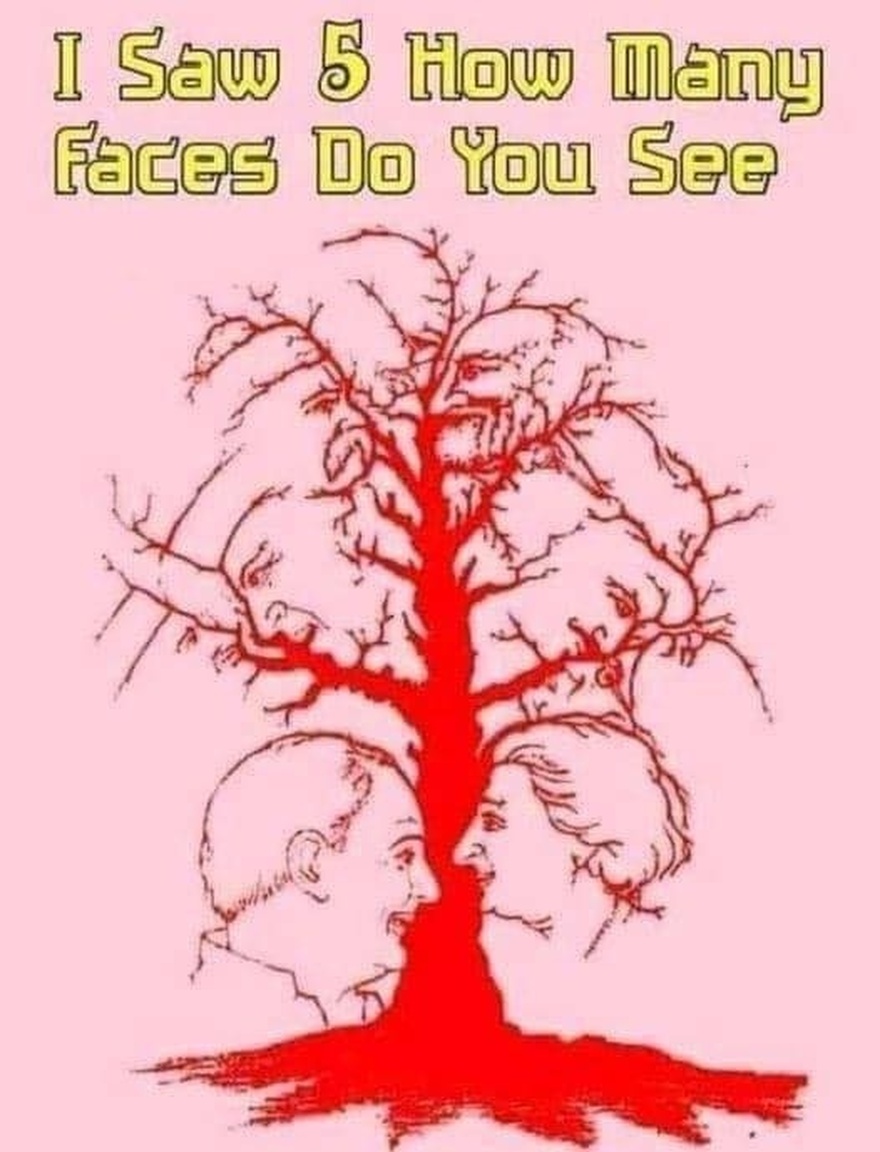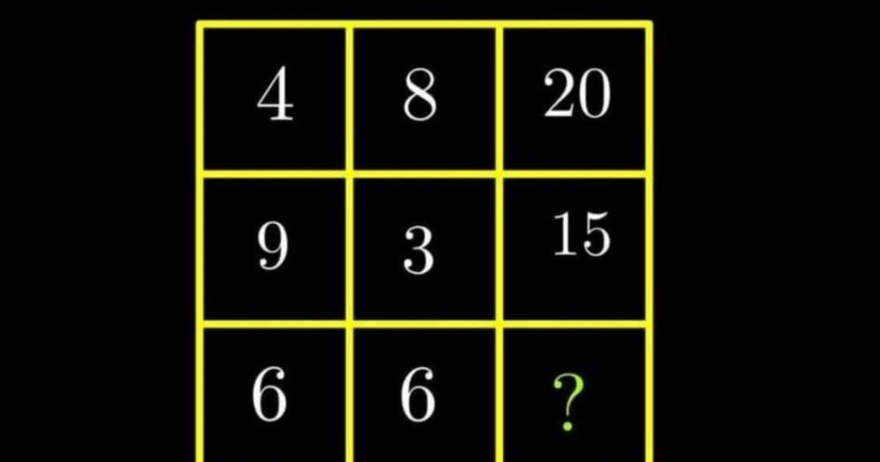Optical illusions have a unique way of captivating our attention, making us question what we see and how we interpret visual information. One such illusion is the “How Many Faces Do You See?” puzzle, where faces are hidden within the branches of a tree. This simple yet intriguing image challenges our perception and offers insight into the complexities of the human brain. In this article, we will explore the science behind optical illusions, the psychology of perception, and the artistic and cultural significance of these visual puzzles.

1. The Science Behind Optical Illusions
At the core of every optical illusion is a fascinating interplay between our eyes and our brain. Optical illusions exploit the way our visual system processes information, often leading us to see things that aren’t there or to miss details that are right in front of us. In the case of the tree with hidden faces, our brain tries to interpret the chaotic arrangement of lines and colors as familiar patterns—such as human faces—because it is wired to recognize faces even in abstract forms.
How It Works:
When we look at an optical illusion, our brain receives conflicting information from our eyes. For example, in this tree illusion, some viewers might first see the tree itself, while others might immediately spot the faces. This difference in perception occurs because our brains prioritize certain visual cues over others, leading to different interpretations of the same image. The brain’s attempt to organize and make sense of the visual chaos is what creates the illusion.
2. The Psychology of Perception
Perception is not just a passive process; it’s an active interpretation of the world around us. Optical illusions like the “How Many Faces Do You See?” puzzle are perfect examples of how perception can be influenced by a variety of factors, including our experiences, expectations, and even our emotional state.
Figure-Ground Perception:
One of the key psychological principles at play in this illusion is figure-ground perception. This is the ability of the brain to separate objects (figures) from their background (ground). In the tree illusion, the faces can be seen as either part of the tree (ground) or as distinct figures superimposed on the tree. The challenge of the illusion is that the brain can switch between seeing the tree and recognizing the faces, but not easily both at the same time.
3. The Role of Art and Culture in Optical Illusions
Online art courses
Optical illusions have not only fascinated scientists and psychologists but have also inspired artists and been deeply embedded in various cultures. Artists like M.C. Escher, who is famous for his impossible structures and mind-bending perspectives, used optical illusions to challenge the viewer’s sense of reality. These artworks are more than just visual tricks—they invite viewers to explore the boundaries between perception and reality.
Cultural Significance:
In many cultures, optical illusions have been used as metaphors for deeper truths. They represent the idea that reality is not always what it seems, and that understanding requires looking beyond the surface. The tree with hidden faces can be seen as a modern representation of this age-old concept, reminding us that there is often more to see if we take the time to look carefully.
4. The Impact of Optical Illusions on Cognitive Development
Optical illusions are more than just fun puzzles—they can also be tools for cognitive development. Engaging with illusions like the “How Many Faces Do You See?” puzzle can improve visual-spatial reasoning, enhance attention to detail, and even boost problem-solving skills. For children, solving these kinds of puzzles can be an entertaining way to develop critical thinking skills and learn about how their brains process visual information.
Practical Applications:
Educators and psychologists often use optical illusions to teach about perception and cognition. These illusions can help students understand the complexities of how we see the world and challenge them to think critically about their own perceptions. Moreover, in fields like design, architecture, and even virtual reality, understanding how optical illusions work can lead to more effective and engaging creations.
Conclusion
Optical illusions like the “How Many Faces Do You See?” puzzle offer a unique glimpse into the workings of our minds. They challenge us to reconsider what we see and remind us that perception is not always straightforward. Whether viewed as a scientific curiosity, a psychological test, or a piece of art, optical illusions continue to fascinate and educate. They reveal the incredible complexity of the human brain and the intricate ways in which we interpret the world around us. Next time you encounter an optical illusion, take a moment to appreciate the hidden layers of perception that it unveils.
This article offers a comprehensive exploration of optical illusions, blending scientific explanation with psychological insight and cultural relevance. It’s designed to appeal to readers who are curious about how their minds work and the fascinating ways in which perception can be both revealing and deceptive






























